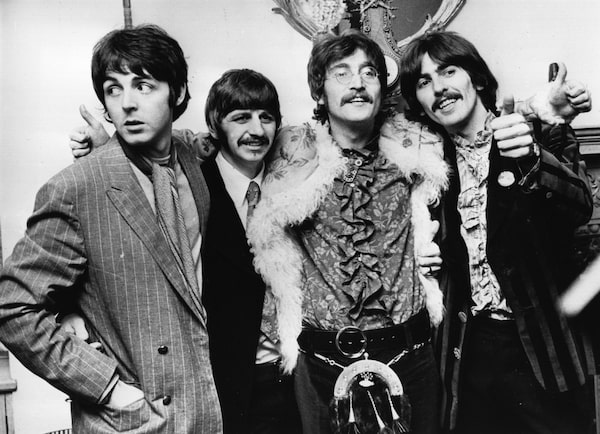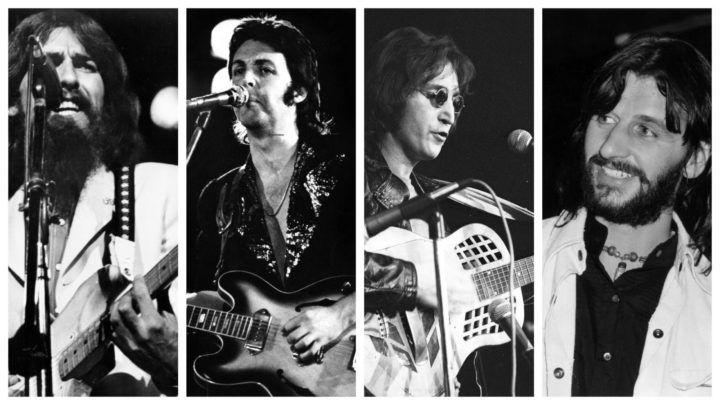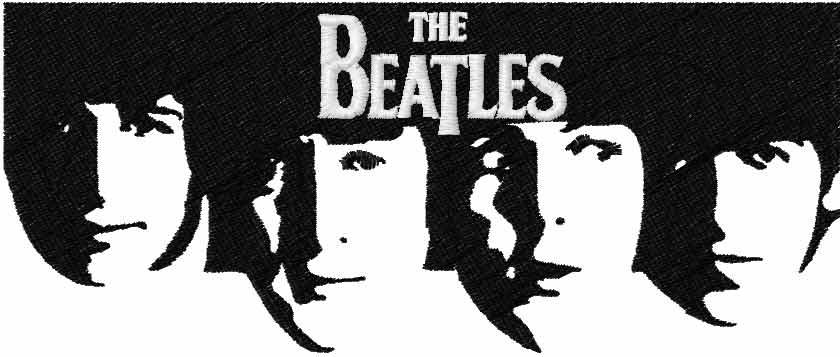When The Beatles burst onto the scene in the early 1960s, they didn't just revolutionize music; they also became enduring style icons, setting trends that transcended the world of fashion. This blog delves into the sartorial choices of The Beatles, tracing how their distinctive styles mirrored and influenced cultural shifts across decades. From John Lennon’s signature round glasses to the iconic Beatle boots, each member of the band brought his unique flair to the ensemble, leaving a mark on fashion that is as indelible as their music. We'll explore various iconic items associated with The Beatles, each telling a story of artistic expression and cultural evolution. These range from the sophisticated yet rebellious black turtleneck sweaters to the bohemian Afghan coats that became symbols of the hippie movement. As we unpack the stories behind these trend-setting choices, we uncover not only a series of fashionable items but also a deeper narrative about how The Beatles continuously reinvented the visual and cultural landscape of their times, influencing not just their fans but generations to come.
The Beatles: Fashion Icons Through the Decades
Music • 9 May, 2024 • 9,296 Views • ⭐ 5.0
Written by Shivani Chourasia

A Canadian Fashion Icon
During a visit to Montreal in May 1969, part of their second honeymoon bed-ins, John Lennon acquired a notable piece of attire from the Canadian retailer Le Château—a black velour zip-front jumpsuit, a staple product of the brand, available in various colours and fabric densities. This unisex outfit with a slightly flared leg was equally fitting for both men and women, prompting Yoko Ono to pick one up as well.
Lennon's jumpsuit became iconic when he wore it on the cover of the Beatles' "Hey Jude" album, enhancing it with a custom Aztec-pattern fanny pack, a broad-brimmed black hat in the Spanish style, likely a bespoke piece from Herbert Johnson, a London milliner, and his signature pointed-toe Beatle boots. The garment, which blurred traditional gender lines in fashion, became widely popular after Lennon was seen wearing it frequently, including during a notable visit back to Canada where he met with then Prime Minister Pierre Trudeau in December of the same year. This jumpsuit didn't just signal a shift towards sexual freedom—it also cemented the Beatles' status as fashion trendsetters.
MUSIC QUIZ • 10 QUESTIONS • 2 MINS
We've got a Music quiz for you!
TAP TO PLAY

When Toronto-based rock journalist Ritchie Yorke travelled to China with American rockabilly artist Ronnie Hawkins as part of Lennon and Ono’s global peace initiative, he wore a black velour jumpsuit from Le Château, a gift from Lennon himself. Today, this piece is treasured and preserved by Minnie Yorke, Ritchie’s widow, in their Australian home, where it continues to embody the spirit of that era, shining perpetually like celestial bodies.
Iconic Steps Forward
Captured in a 1964 photograph, the Beatles—Ringo Starr, George Harrison, John Lennon, and Paul McCartney—are often remembered for their distinctive black leather boots with sharp pointed toes and elevated Cuban heels. These boots, a slimmer take on the traditional Chelsea boot, became an essential part of their style repertoire during the early 1960s. Known widely as Beatle boots, their inception into fashion history began when Lennon and McCartney admired a pair of Spanish flamenco ankle boots in the display of Anello & Davide, a shop specializing in theatrical and ballet footwear, located in London’s Chelsea District during a nocturnal outing.
The inspiration for these boots initially came when the Beatles saw them worn by musicians in a competing band during their stint in Hamburg, sparking their desire for similar footwear. Returning the next day, the band’s leading songwriters ordered four pairs tailored to their specifications, including elastic side panels and a two-inch heel, enhancing the original design’s height.
The Beatles paired these boots with both casual jeans and, more strikingly, with their sleek, tailor-made suits, amplifying their slender figures and projecting an image of modern, youthful elegance that symbolized forward-thinking and progress.
As the Beatles climbed the charts, their iconic boots also ascended in popularity, becoming a coveted item not only among fans worldwide but also influencing other bands like the Byrds and the Dave Clark Five. The enduring appeal of Beatle boots was highlighted in 2015 when then British Prime Minister David Cameron was spotted wearing them at 10 Downing Street, earning them high praise from GQ magazine as a quintessential, versatile footwear staple for any man’s wardrobe.
An Iconic Counterculture Garment
The black turtleneck sweater, known as a polo neck in other parts of the world, became an emblematic article of clothing for artists, beatniks, and poets, encapsulating a spirit of rebellion and nonconformity. The Beatles first encountered this style during their initial visit to Hamburg in 1960, worn by Astrid Kirchherr, a young German photographer. Inspired by French actress and singer Juliette Gréco, a muse for McCartney and a figure synonymous with the intellectual flair of Paris's Left Bank, Kirchherr adopted an all-black ensemble that captivated the Beatles.
For the Beatles, this simple yet profound piece of clothing symbolized a break from conventional norms. Throughout the 1960s, they often paired the turtleneck with jeans or custom-tailored jackets, signalling a rebellious identity that resonated deeply with their fans.
This attire later transitioned into the corporate world through Steve Jobs, who adopted the black turtleneck, custom-designed by Issey Miyake, as his signature look during Apple’s major events in the 1980s and 1990s. This choice was more than a fashion statement; it was a nod to the innovative spirit of the Beatles, representing simplicity and ingenuity.
Interestingly, Apple Inc., established in 1976 and named eight years after the Beatles' multimedia company, Apple Corps., also embraced creativity as a core brand value, channelling the same innovative spirit the Beatles famously displayed. This connection highlights how the iconic turtleneck transcended its counterculture origins to become a symbol of pioneering thought and creativity in various fields.
A Trendsetting Sheepskin Coat from the Summer of Love

John Lennon captured the spotlight at the launch party for the "Sgt. Pepper's Lonely Hearts Club Band" in May 1967, wearing an eye-catching Afghan sheepskin coat. This garment, characterized by its white fleece lining and a vivid yellow exterior, was elegantly paired with a frilly floral shirt. As the modern fashion era evolved into the hippie street style, these coats became a symbol of the cultural shift.
Craig Sams, an entrepreneur known for founding London's inaugural macrobiotic restaurant and later the renowned organic chocolate brand Green & Black, was instrumental in introducing these sheepskin coats to the London fashion scene. He imported them from Kabul, where local craftsmen intricately embroidered them with colourful silk threads. These unique pieces found their way into upscale boutiques like Hung On You and Dandie Fashions on London’s fashionable King’s Road. The popularity of these coats surged when Lennon was spotted wearing one as he stepped out of another trendy shop, Granny Takes a Trip, also located on King’s Road. George Harrison and Ringo Starr were soon seen sporting their Afghan coats during significant Beatles events, such as the press day for the "All You Need Is Love" broadcast and the filming of "Magical Mystery Tour."
These celebrity endorsements were well-documented, leading to what Craig Sams described on the Sweet Jane fashion blog as "a global craze" for Afghan coats. The demand skyrocketed to the point where, as Sams noted, no sheep from Istanbul to Kabul was safe, as they were quickly slaughtered for their pelts. This rush to meet demand led to some coats being poorly processed, resulting in an unfortunate side effect: they emitted a strong, unpleasant scent of decay. John Pearse, the head tailor and co-owner of Granny Takes a Trip, expressed regret over selling them, noting that even the Beatles, caught up in the trend, ended up smelling less than pleasant. "It was one trend I wished they’d never started," Pearse remarked.
Iconic Eyewear That Continues to Impress
George Harrison once joked about John Lennon’s poor eyesight, saying he was "blind as a bat." Lennon, the Beatles’ rhythm guitarist, had required glasses since he was young but initially resisted wearing them in public due to self-consciousness. It wasn't until director Richard Lester insisted he wear them for his role in the 1967 film "How I Won the War" that Lennon donned the classic round frames.
In the movie, Lennon's character, Private Gripweed, sported the basic round spectacles provided by Britain’s National Health Service, a common style given out to those in need. Despite qualifying for a pair of these round Windsor glasses as a child in Liverpool, Lennon had always found them too ordinary, even calling them “common.”
However, his role in Lester’s comedic war film shifted his perspective. By 1967, the circular glasses had become an integral part of Lennon's image. He featured them on the cover of the "Sgt. Pepper" album, in the "Magical Mystery Tour" film, during the Beatles’ final live performance on the rooftop of Apple headquarters, and throughout his solo career.
Lennon’s glasses were not off-the-shelf; they were custom-made, crafted by notable artisans such as Oliver Goldsmith in London and later by Gary Tracy, an optometrist based in Manhattan after Lennon relocated to New York in 1971.
The distinctive style of John Lennon's glasses eventually became iconic, influencing figures like Ozzy Osbourne and being included in fashion collections by designers such as Tom Ford. Today, these glasses remain a timeless accessory, continuing to draw attention and emulate the unique style of Lennon himself.
Conclusion
As we reflect on The Beatles' profound influence on fashion, it's clear that their legacy extends far beyond their music. Each style choice made by the band members was more than just a personal preference; it was a reflection of the cultural zeitgeist, pushing boundaries and setting new trends. From the streets of London's King’s Road to the silhouette of a round-lens glasses frame, The Beatles' fashion choices have left an indelible mark on the world. Their ability to blend music with visual expression created an aura that continues to resonate with both nostalgia and freshness. As we've explored the iconic garments and accessories associated with the band, we see a tapestry of stories that speak to innovation, identity, and the spirit of an era. The Beatles didn't just wear clothes; they wore statements that echoed through the halls of music and fashion history, illustrating that true style never fades but evolves. This blog has not only revisited these iconic looks but also celebrated the timeless influence of The Beatles as quintessential trendsetters whose fashion legacy, much like their musical one, will continue to inspire and captivate for generations to come.
Test your knowledge of Music! Visit: https://4123.play.quizzop.com/music-quiz/category
Rate this article




